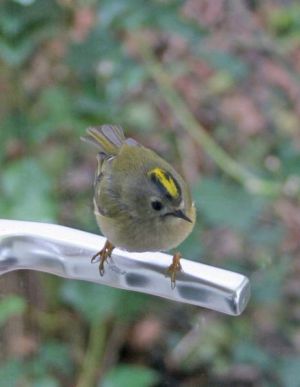Attacking windows
How to stop birds from attacking windows
Many birds that attack windows become seemingly obsessed with their reflection and behave territorially to this 'intruder' to their territory. Breaking this cycle by removing the stimulus (the reflection) is, therefore, essential.
Simple solutions can involve putting a non-reflective material, such as cling film or non-reflective cellophane, on the outside of a window. Physically blocking access to windows with plants and hanging baskets might also help, while objects that dangle and catch the light and wind (e.g. strips of foil, CDs) could be effective.
It might also be worth placing a mirror near a window that is being attacked to provide an alternative reflection on which the bird can focus. If multiple windows are being attacked in sequence, target a window early in the chain.
In most species, territorial behaviour will subside outside of the breeding season, so window attacks should become less frequent.
Non-territorial reasons for visiting windows
Other reasons why birds visit windows include the opportunity to glean invertebrates from spiders’ webs or to peck at window putty. The latter behaviour is typically perpetrated by the tit family, and mainly occurs during autumn and winter.
Although seemingly irrational, it is thought that these birds are attracted by linseed or fish oils which can be found in some putty. This being the case, switching to synthetic putty that does not contain these ingredients might help. Some people have even suggested mixing black pepper into the putty to further deter this behaviour.
Brushing the window frame with a substance that is distasteful to birds, such as aluminium ammonium sulphate, might also help. Perhaps the simplest thing to try initially, however, is to cover the putty with masking tape to deter inquisitive beaks.







Share this page